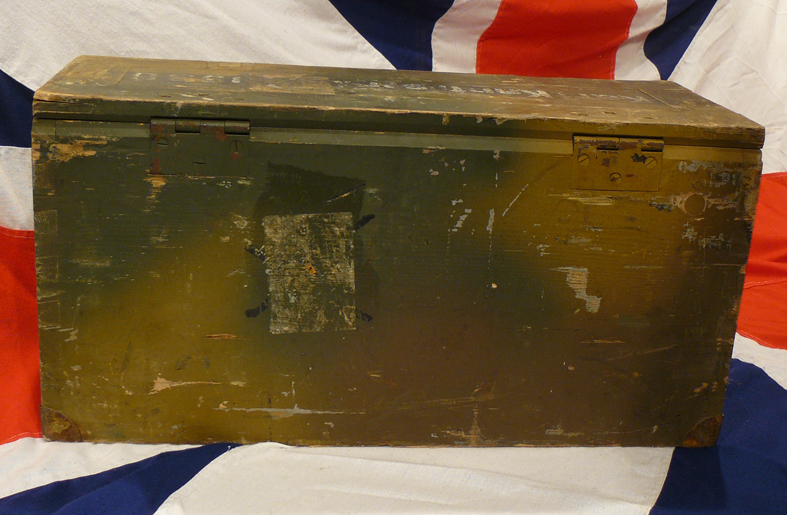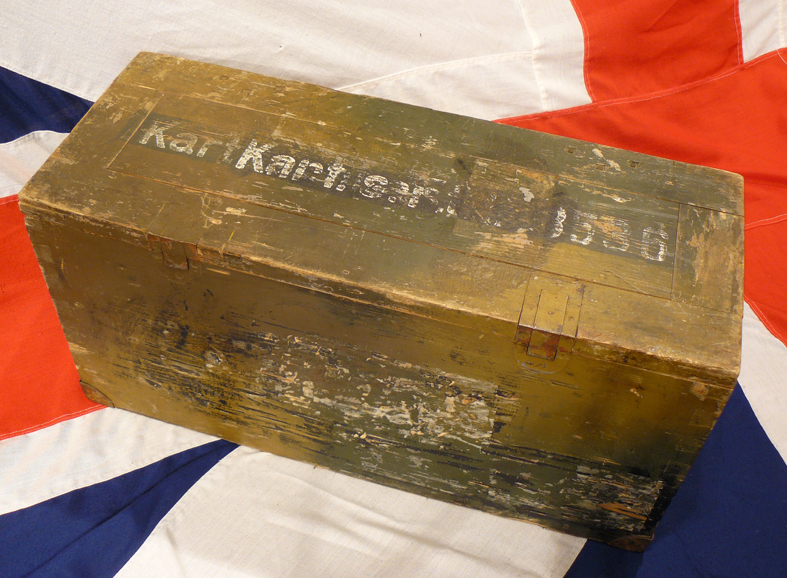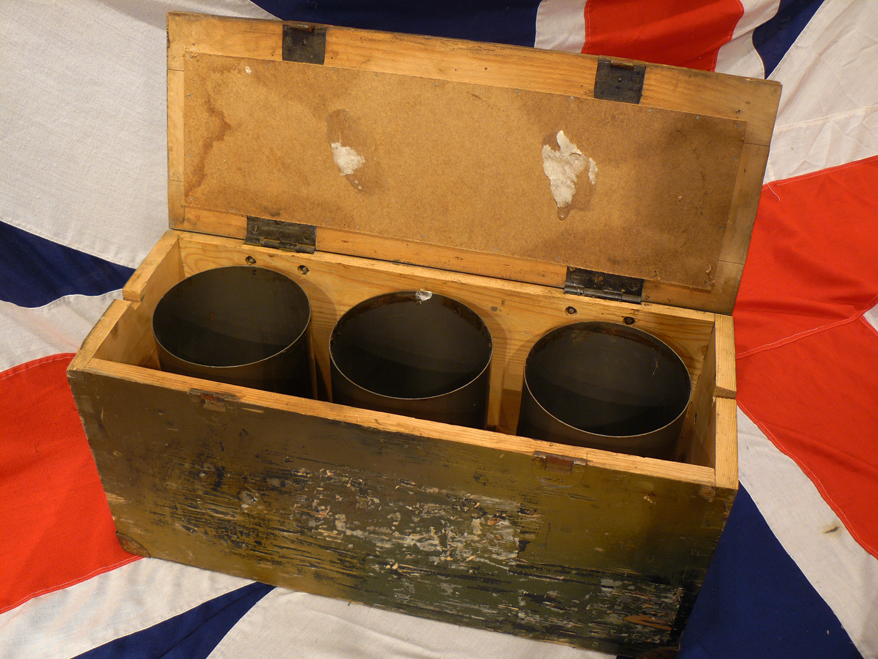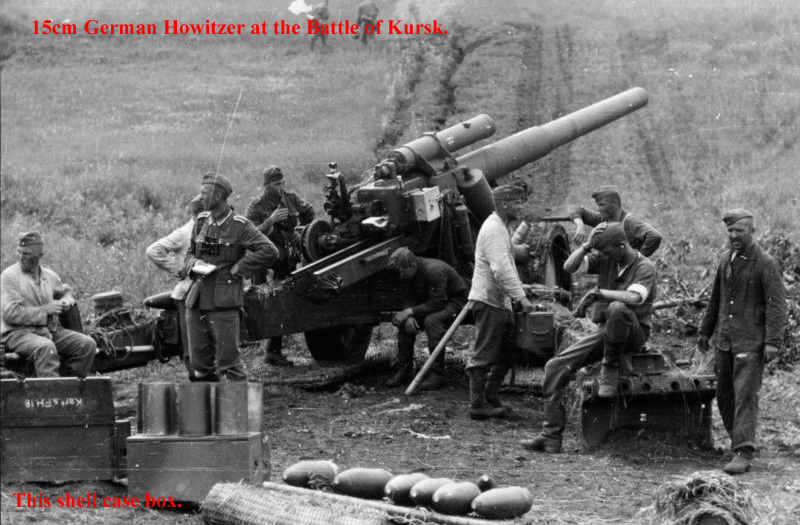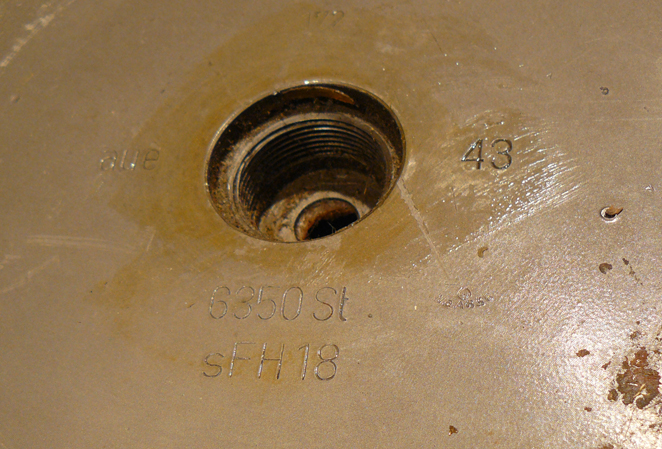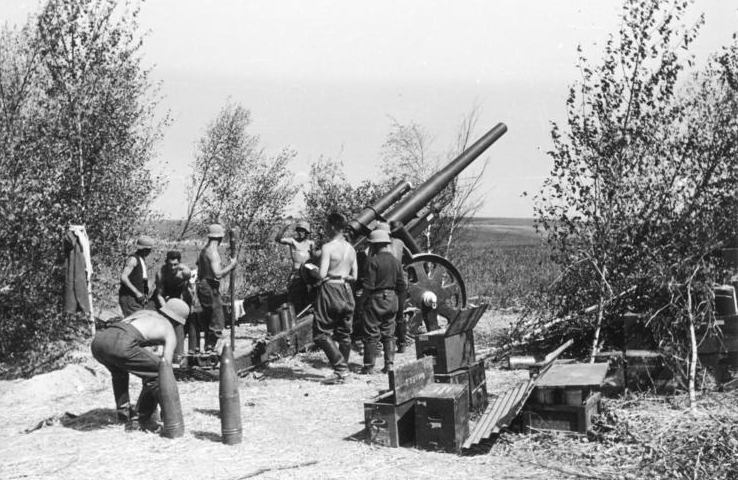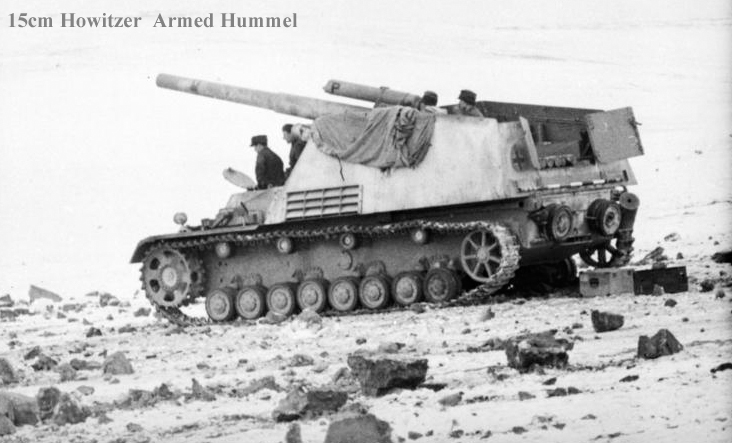A Fabulous, Original, Cased Set of 3 German 15cm Howitzer Steel Shell Cases
The box case still with it's original German Army camouflage paint. Each shell case is dated. The 15 cm schwere Feldhaubitze 18 or sFH 18 (German: "heavy field howitzer, model 18"), nicknamed Immergren ("Evergreen"), was the basic German division-level heavy howitzer during the Second World War, serving alongside the smaller but more numerous 10.5 cm leFH 18. It was based on the earlier, First World War-era design of the 15 cm sFH 13, and while improved over that weapon, it was generally outdated compared to the weapons it faced. It was, however, the first artillery weapon equipped with rocket-assisted ammunition to increase range. The sFH 18 was also used in the self-propelled artillery piece schwere Panzerhaubitze 18/1 (more commonly known as Hummel).
***We bought a collection of these scarce collectors items, original Third Reich shell cases, some are now sold.
The sFH 18 was one of Germany's three main 15 cm calibre weapons, the others being the 15 cm Kanone 18, a corps-level heavy gun, and the 15 cm sIG 33, a short-barreled infantry gun. The gun originated with a contest between Rheinmetall and Krupp, both of whom entered several designs that were all considered unsatisfactory for one reason or another. In the end the army decided the solution was to combine the best features of both designs, using the Rheinmetall gun on a Krupp carriage.
The carriage was a relatively standard split-trail design with box legs. Spades were carried on the sides of the legs that could be mounted onto the ends for added stability. The carriage also saw use on the 10 cm schwere Kanone 18 gun. As the howitzer was designed for horse towing, it used an unsprung axle and hard rubber tires. A two-wheel bogie was introduced to allow it to be towed, but the lack of suspension made it unsuitable for towing at high speed. The inability of heavy artillery like the sFH 18 to keep up with the fast-moving tank forces was one of the reasons that the Luftwaffe invested so heavily in dive bombing, in order to provide a sort of "flying artillery" for reducing strongpoints.
The gun was officially introduced into service on 23 May 1935, and by the outbreak of war the Wehrmacht had about 1,353 of these guns in service. Production continued throughout the war, reaching a peak of 2,295 guns in 1944 Inert empty and safe, but not suitable for export or for sale to under 18'
Code: 18417
335.00 GBP


